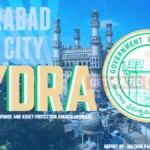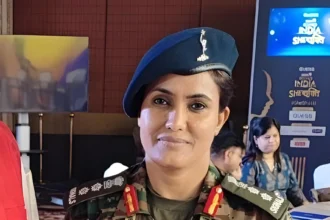PM Modi in Thailand is making headlines as India’s cultural diplomacy takes center stage ahead of the highly anticipated BIMSTEC Summit 2024. His visit is expected to strengthen regional cooperation and enhance India’s influence in Southeast Asia.
In Bangkok, PM Modi arrived for the Bimstec Summit. His visit was greeted by a cultural welcome that included a dance performance with a Ramayana theme, a lively exhibition of Gujarati Garba, and the local Thai community reciting Sanskrit mantras.

When Indian Prime Minister Narendra Modi arrived in Bangkok, he was greeted by Thai performers who performed Ramakien, the Thai version of the Ramayana (Photo: https://x.com/narendramodi).
The sixth Bimstec (Bay of Bengal Initiative for Multi-Sectoral Technical and Economic Cooperation) Summit is taking place in Bangkok, and Prime Minister Narendra Modi arrived on Thursday for a two-day visit. PM Modi and his Thai counterpart Paetongtarn Shinawatra met bilaterally in Bangkok a few hours after his arrival, covering a variety of topics related to bilateral cooperation.
Suriya Jungrungreangkit, Thailand’s Deputy Prime Minister and Minister of Transportation, welcomed him with open arms. The trip demonstrates India’s dedication to promoting regional collaboration and presenting its rich cultural legacy internationally.
PM Modi in Thailand: Upon landing at Don Mueang Airport, he was greeted with vibrant cultural displays by the Indian diaspora. Members of the Sikh community performed Bhangra, while other groups showcased India’s diverse traditions. Highlights included Garba from Gujarat, Jain Navkar mantras, and a memento gifted by the Sikh community symbolizing the Golden Temple.
The Bhagavad Gita was performed by the Iskcon community, and guests were enthralled by a captivating dance performance inspired by Thailand’s national epic, Ramakien. Inspired by India’s Ramayana, Ramakien portrays the two countries’ common cultural heritage.
Bimstec Summit: Increasing ties within the region
With the theme “Prosperous, Resilient, and Open,” the Bimstec Summit seeks to strengthen cooperation between its member nations, which include Bangladesh, Bhutan, India, Myanmar, Nepal, Sri Lanka, and Thailand.
With the theme “Prosperous, Resilient, and Open,” the Bimstec Summit seeks to strengthen cooperation between its member nations, which include Bangladesh, Bhutan, India, Myanmar, Nepal, Sri Lanka, and Thailand.
The Bimstec Summit’s main outcomes on regional cooperation include agreements on institutional capacity-building initiatives and Bangkok Vision 2030.
PM Modi issues a statement
PM Modi emphasized Bimstec’s importance in fostering regional growth and connectivity during the previous ten years in his farewell statement. With 1.7 billion people living there and a $4.7 trillion GDP, Bimstec is an essential platform for promoting security and economic development in South and Southeast Asia.
PM Modi also delivered a subliminal message to Muhammad Yunus, the chief adviser of Bangladesh, who is in charge of the transition administration after Sheikh Hasina’s cabinet was overthrown in August 2024, just seven months after she was elected to the parliament. Yunus had previously stated that the Northeast region of India was landlocked and that Bangladesh served as the entryway to the Bay of Bengal.
In light of Bangladesh’s recent efforts to tip the regional balance by asking China to participate in the Indian subcontinent, Prime Minister Modi dismissed Yunus’s claim that India’s Northeast was “at the heart of the Bimstec” in his parting remarks.
Utilizing cultural diplomacy to bridge civilizations
PM Modi in Thailand: Strengthening Global Cultural Ties Through India’s Rich Heritage

PM Modi’s trip to Thailand is a component of his larger plan to promote India’s cultural legacy around the world. Indian customs take center place wherever he goes. He offered holy water from Triveni Sangam at Ganga Talao during his March 2025 visit to Mauritius, signifying the spiritual union of Mauritius and India. He met people in Kuwait last year who are famous for translating the Ramayana and Mahabharata into Arabic.
He has traveled to Brazil, Guyana, Russia, Laos, and Italy for similar cultural exchanges. PM Modi saw Vedic chants and Ramayana enactments at Rio de Janeiro, Brazil. During his arrival, youngsters in Guyana sang heartfelt Ram Bhajans.
During his October 2024 visit to Kazan, Russian citizens chanted Krishna Bhajans. Gayatri Mantra chants and a Lao Ramayana performance including regional adaptations of Indian epics were used to greet him in Laos.
Improving ties between Thailand and India

Language, culture, and religion are the foundations of the strong civilizational relations that exist between Thailand and India. Initiatives like the recent display of Lord Buddha’s relics in five Thai cities, which is evidence of their common Buddhist background, have strengthened this relationship even more.
PM Modi’s visit to Thailand will include bilateral discussions with his colleague Shinawatra in addition to the Bimstec Summit. Thailand is an important part of India’s Indo-Pacific strategy as a strategic ally and maritime neighbor under Act East policy. The constructive bilateral momentum created by PM Modi’s participation in the 2019 Asean Summit is furthered by his second visit to Thailand.
In light of a rapidly shifting global order, primarily due to US President Donald Trump’s policy decisions since late January, PM Modi’s trip to Thailand seeks to combine cultural diplomacy with regional collaboration. PM Modi continues to fortify his relationships with international partners while commemorating India’s rich legacy on the international scene by presenting India’s customs at international gatherings like Bimstec.















